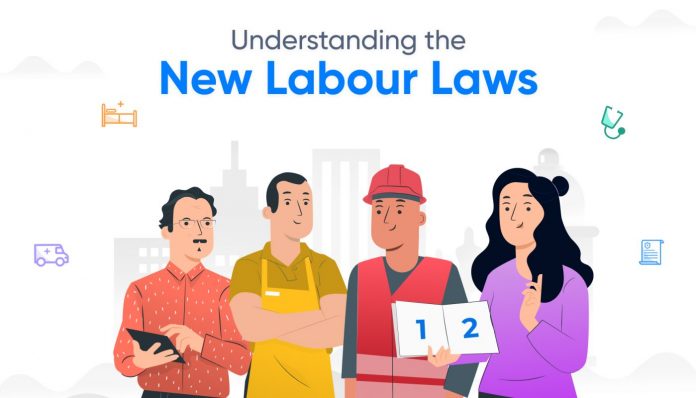This article is written by Apoorva Purohit who is pursuing a Certificate Course in Introduction to Legal Drafting: Contracts, Petitions, Opinions & Articles from LawSikho.
Table of Contents
Introduction
Considering the present scenario of Covid-19, it has been observed that there is the dismissal of female employees from the workplace either prior to their maternity leave or during their maternity leave which is against the provisions of the Maternity Benefit Act (“Act”), particularly Section 12 and Section 17 of the Act. In India, women employees have various specific laws given the social disadvantageous position they are in; be it sexual harassment at the Workplace Act, The Equal Remuneration Act, or Minimum wages Act. When it comes to maternity policies in India, the Maternity benefit Act, 1961 governs the maternity benefits of women. The Maternity Benefit Act came into place to deal with the care of women at the workplace before and after childbirth. This act came into place as per Article 15, 39(e) and Article 39(f) of the Constitution of India, 1950 where it is stated under directive principles of state policy “The state shall, in particular, direct its policy towards securing the health and strength of the workers, men, and women”. The idea of Maternity policy is based on the principle of social justice and should be provided to all women irrespective of race, religion, or any other social categorization. 
What is maternity policy?
In order to protect the interests of women during pregnancy and as a matter of family and child welfare rights, the maternity policy states that a woman should be given paid leave at her workplace. The earliest recognition of maternity policy was established via Maternity Protection Convention 1919 but it lacked many substantial requirements and the relevant ILO instrument in the current scenario is Maternity Protection Convention, 2000. The present convention provides for 14 weeks of maternity leave to the countries where the instrument applies. The instrument also provides for some cash amount being given to women to maintain themselves substantially during this period. It also establishes a woman’s right to one or more daily breaks or a daily reduction of hours of work to breastfeed her child after returning to work. India has not ratified the convention but we have Maternity Benefit Act, 1961 which is astringent and robust legislation to reduce any disparities relating to any such provisions relating to maternity policy under various states. Women often face discrimination or biases during pregnancy or after childbirth, hence it is important for the states to have a concrete maternity policy.
Need for such policy
In India, less than one quarter 20.3% of the workforce is women, compared to men (which is 76%) women are only 19.9% of the total workforce in India as of 2020. The reasons for the same have to do with the way women are being treated with biases in the society and at the workplace, restrictive traditional norms regarding women’s labor, pay disparities between men and women, flexible work attendance during the maternity period, and other safety issues. All of these and other factors contribute to the lack of labor force of women and such a wide gap between men and women in the workplace. Hence, there is a need for more women representation in the country, in various spaces, including the workplace. There has been an increase in the rate of unemployment of women and rapid job stagnation of women in the Covid-19 situation and often it is due to her being pregnant or just after her pregnancy.
The need for maternity policy in India becomes a necessity to act as a bridge for the gap in the gender labor force. The primary reasons are also to preserve children as well as women’s health, to restore principles of social justice and human dignity, and to establish economic independence of women because economic dependence has been one of the major reasons for women’s subordination in the domestic as well as social spaces.
The majority of women also want to become mothers at some point in their lives and they should not be in the position to choose between having a job and having a child.
Maternity benefit vis a vis Constitution of India and 1961 Act
The Indian constitution enumerates various rights for women regarding maternity benefits, though there is no express provision for the same we have Article 14 ( the umbrella provision for equality), Article 15 and 16 ( right of social equality ), Article 15 (3) is based on the principle of protective discrimination, which gives power to the state to make special laws for women, Article 39(d) ( equal pay for equal work ) Article 39 (e) ( the right that health of workers, both men and women aren’t abused ), Article 42 ( right to provide just and humane conditions at work and maternity benefit ), Article 46 ( improvement in the work opportunities and the conditions of women at workplace.
By virtue of Article 15(3), the Maternity benefit Act 1961 came into place. The purpose of the Act is to preserve the dignity and wellness of a mother and the child for holistic development. The benefits included 12 weeks of paid leave ( 6 weeks before and 6 weeks after pregnancy ) medical leave, 6 weeks leave with average pay from the date of miscarriage, two nursing breaks till the time child turns 15 months old, no disadvantage after she resumes her employment, no dismissal during her maternity leave, a pregnant woman employee who is discharged or dismissed can claim her maternity benefit, The act also grants 6 weeks of fully paid leave to women who experience a miscarriage at any point in their pregnancy.
Amendment of 2017
One of the prominent changes that were brought with the 2017 amendment was extending the paid leave from 12 weeks to 26 weeks; which would be 8 weeks before the childbirth and up to 18 weeks after the pregnancy, though it is only for mothers having up to 2 children and not more. The mothers of 3 or more children shall be entitled to 12 weeks paid leave as per the earlier law. The amendment also recognized the rights of adoptive or commissioning mothers by providing them paid leave up to 12 weeks, work from home option as per mutual agreement with the employer, taking into consideration the nature of the work after the expiry of the period of 12 weeks. Women employees should be permitted to visit crèches 4 times a day, including the rest interval.
Changes in the policy of companies as per new law
The compliance with the new law has been poor, though India surpasses many countries in terms of the progressive nature of its maternity benefits policies the ground reality is very different. As per a survey “Maternity Benefits (Amendment) Act 2017: Revisiting the impact”, there has been a drop in the women workforce in the following sectors which are Manufacturing, Real estate, Aviation, Retail, Tourism. As a result, women have likely faced a net job opportunity loss between 9.1 lakhs,13.6 lakhs over FY 2019-20, compared to the 13 lakhs -18 lakhs job loss in 2018-19. Though there are sectors that have worked better with the employment of the women such as BPOs, IT, Ecommerce, banking, and insurance sectors. Also, 40% of employers are not complying with the paid 26 weeks leave provision. Women have also reported wage cuts after they resumed back to work. Given the Covid-19 situation, there has been even more loss in the women’s workforce. Around 13% of women had to lose their jobs as compared to 2% of men.
There has been no official public data to see the compliance of the crèche provision but as per the TeamLease services survey there has been up to 50% of employers who have not provided with the crèche facility as mentioned in the amendment and as per VVGNLI (VV Giri National Labour Institute) survey, 12 IT sector employers in four states; Haryana, Maharashtra, Telangana, and Karnataka–found that 75% of the employers had no creche facilities even after having more than 50 employees. A creche facility is a luxury for employers that are still starting out or don’t have enough turnover and ironically this provision leads to such employers opting for men in their labor force and losing out on the female workforce. The research also shows that the act doesn’t cover the majority of working women in the country, as there is a prerequisite of 10 or more women employees, which is only a marginal share of the women workforce, around 84% of women work in unorganized sectors or such workplaces with less than 10 women workers. Companies like Citibank, Flipkart, Google, Accenture, HSBC India are few of the companies to have adapted to the new maternity policies and set as an example for the other companies.
Conclusion
India surpasses the majority of developed counterparts when it comes to maternity policies. Only recently New Zealand announced to provide paid miscarriage leave, something that India has been providing since 1961, as the original act inculcates 6 weeks of fully paid leave for women who experience a miscarriage at any point in their pregnancy, with the 2017 amendment raising the bar of paid leave to 26 weeks is also something that most developed nations also lack. But the only setback in India is with its application of the law and how it is perceived by employers. The companies that happen to adapt to the new policies are the elite companies and hence this law is catering to the bourgeoisie class of India and not promoting the growth of have nots in India. Companies ( big or small ) should be incentivized by various campaigns to address social challenges that women face, also there should be more methods to incentivize the employers that need to be incorporated to promote the application of the new maternity policies.
References
- India: Maternity benefit and Covid-19: Rights and dismissal during Covid-19?, BhanitaPatowary, Link: mondaq.com
- International labor standards on Maternity protection, www.ilo.org https://www.catalyst.org/research/women-in-the-workforce-india
- Gender Justice: The Constitutional Perspectives And The Judicial Approach, AlokChantia,www.academia.edu/4362417/Gender_Justice_The_Constitutional_Perspectives_And_The_Judicial_Approah, 09/08/2014
- The need for maternity benefits by women employee, RichaJhawar,https://www.lawctopus.com/academike/the-need-for-maternity-benefits-for-women-employee
- Maternity Benefits (Amendment) Act 2017: 3 years later, result far from satisfactory, SonalKhetarpal, www.businesstoday.in/current/economy-politics/maternity-benefits-amendment-act-2017-3-years-later-result-far-from-satisfactory
- Large employers are required to have provided crèches but most don’t, Shreya Raman, www.indiaspend.com/women/large-employers-are-required-to-provide-creches-but-most-dont.
Students of Lawsikho courses regularly produce writing assignments and work on practical exercises as a part of their coursework and develop themselves in real-life practical skills.
LawSikho has created a telegram group for exchanging legal knowledge, referrals, and various opportunities. You can click on this link and join:












